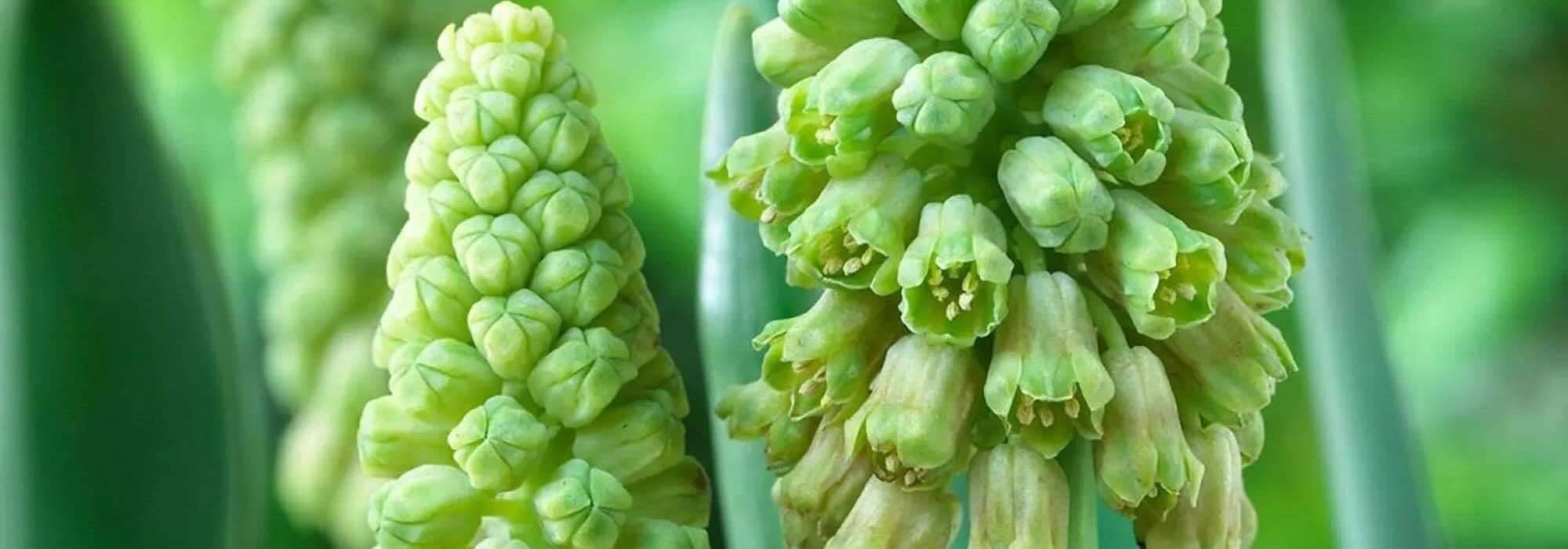
7 Green-Flowering Bulbs for an Unusual and Elegant Spring
Our original selection
Contents
In the garden, the colour green is everywhere… except on flowers! Yet, some varieties dare to embrace this discreet and refined hue, playing the role of botanical chameleons or rare gems. Green flowers possess a charm that is both subtle and original, perfect for softening vibrant spring displays or creating delicate compositions. They surprise, intrigue, and above all, they enhance all other flowering varieties with their sophisticated simplicity.
Discover our selection of 7 spring-flowering bulbs with green blooms, ranging from classics like tulips to rarer botanical species. From cool rockeries to shaded woodland areas, and from pot displays to sunny borders, there’s something for every taste and exposure. What do these beauties have in common? A unique allure—sometimes wild, sometimes graphic—but always full of poetry.
Anemone nemorosa 'Virescens' – The Green Elegance of Shade
Still relatively uncommon in France, Anemone nemorosa ‘Virescens’ is a botanical rarity with subtle yet powerful charm. This wood anemone forms a low carpet, reaching 15 cm in height and 20 cm in width, spreading slowly via a fleshy rootstock just beneath the soil surface. Its flowering period, from March to mid-May, surprises with its green “flowers” shaped like tiny palm trees, composed of finely divided green foliar bracts surrounding a discreet yellow centre. Here, there are no petals—just an elegant, graphic, almost sculptural plant structure.
Awarded an AGM by the Royal Horticultural Society, ‘Virescens’ is ideal for cool, partially shaded to fully shaded areas, in humus-bearing soil. It thrives at the base of hedges, under deciduous trees, or in shaded borders where it establishes slowly but eventually forms a dense, low-maintenance ground cover that resists adventive plants. For soft, natural pairings, consider Anemone blanda, which takes over as flowering ends, or contrasting foliage like dwarf hostas.
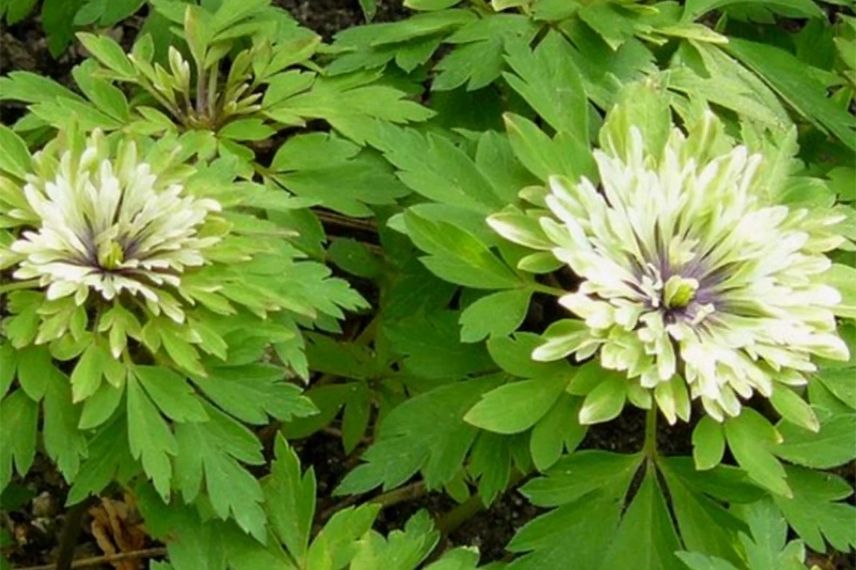
Fritillaria pontica – Montane bells in green and mauve
Small yet full of charm, the Fritillaria pontica is a botanical species native to the mountains of the Balkans and Turkey. This hardy bulbous plant forms in spring (April-May) slender stems of 20 to 38 cm bearing pendulous bell-shaped flowers around 4 cm, with a subtle hue: pale lemon yellow-green, delicately edged with purplish-brown on the outside and green speckled with brown on the inside. Its grey-green leaves, narrow and arranged in threes, enhance its natural and elegant appearance.
Perfectly suited to rock gardens or cool, well-drained borders, it prefers a sunny but not scorching or partially shaded position. The soil should remain moist in spring then dry out in summer, mimicking its original montane habitat. It enters summer dormancy and does not tolerate excessive heat. Paired with pasque flowers, tulips and botanical daffodils, it creates a scene that is both rustic and sophisticated, with spring flowering in soft tones and a delightfully wild yet chic spirit.
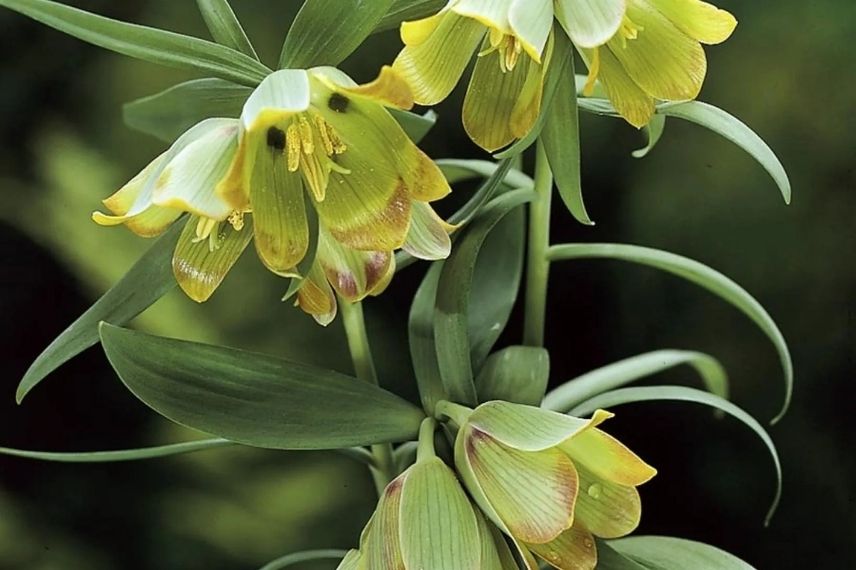
Tulip 'Brooklyn' – A Bicoloured Rarity for the Garden
The Tulip ‘Brooklyn’ is a variety with exceptional double flowers that bloom in May. Each flower features a central cone of tightly imbricate white petals, surrounded by petals in varying shades of green, creating a striking contrast and exotic appearance. This tulip reaches about 25 cm in height at ripeness and is characterised by sturdy, stocky stems.
Extremely hardy, the Tulip ‘Brooklyn’ is versatile and adapts to various uses: in borders, flower beds, edging, or even in pots and containers. Its unique flowers also make wonderful cut flowers. For a harmonious pairing, plant Tulip ‘Brooklyn’ alongside Muscari armeniacum or Narcissus ‘Thalia’ which share similar growing requirements and whose hues will complement the tulip’s unique green tones.
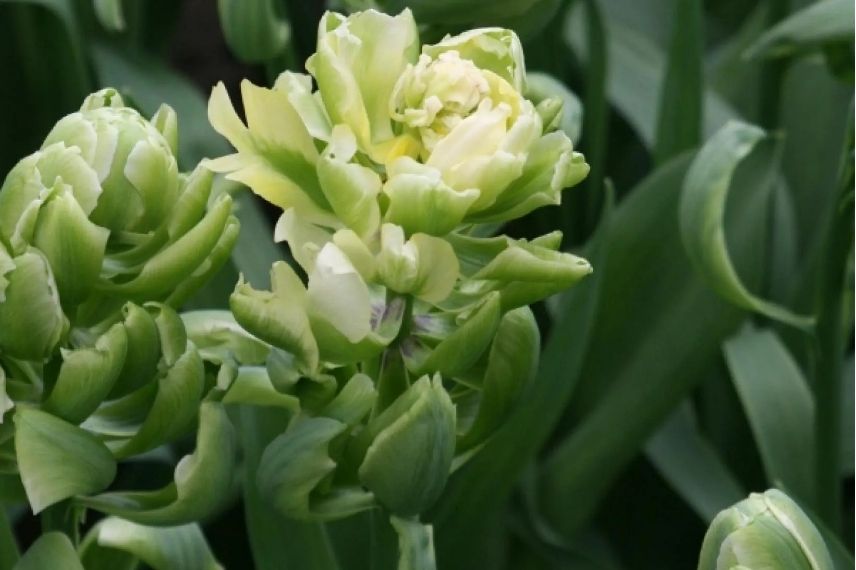
Bellevalia pycnantha 'Green Pearl' – A Green Grape Hyacinth
Little-known yet full of promise, the Bellevalia pycnantha ‘Green Pearl’ (formerly Muscari paradoxum) is a hardy bulbous plant native to Turkey and the Caucasus. In spring (April-May), it produces a unique flowering display: small conical spikes of bell-shaped flowers in chartreuse green fading to cream, borne on stems shorter than the foliage, which resembles that of a hyacinth in texture and width.
Reaching 15 to 30 cm in height, this plant thrives in very well-drained soil, even stony or sandy, and requires a dry summer to respect its natural cycle. Indeed, the foliage completely dies back by June, leaving the bulb dormant until autumn. Highly adaptable, Bellevalia ‘Green Pearl’ fits perfectly in rockeries, borders, or at the foot of deciduous trees. Pair it with crocuses or botanical tulips for a fresh and delicate spring scene. Its subtly fragrant flowering, visited by bees, adds a rare and original touch to the collector’s or enthusiast’s garden.
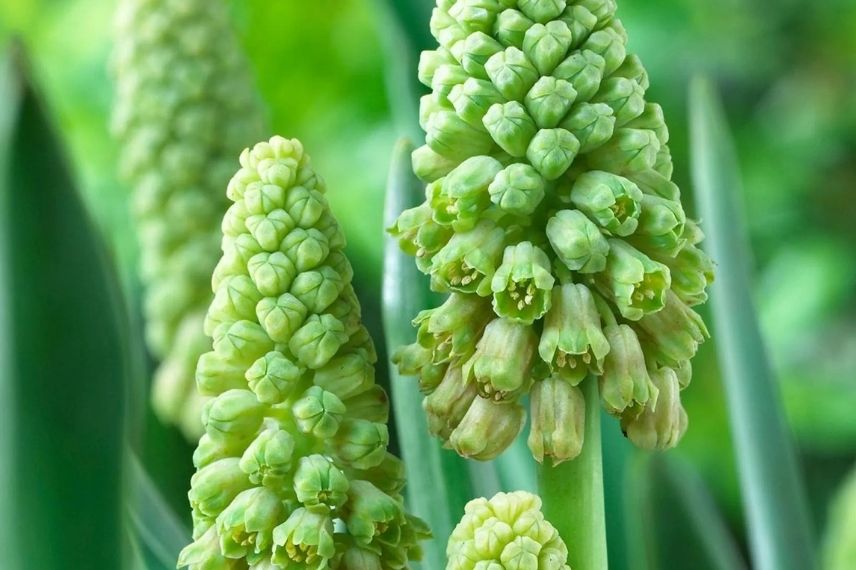
Gladiolus 'Green Star' – The Lime Green Brilliance of Summer Borders
With its large, ruffled flowers in shades of anise green to lime green, the Gladiolus ‘Green Star’ brightens up summer borders and transforms homemade bouquets into true florist arrangements. Belonging to the Grandiflorus group, it forms a large leafy clump 1 metre tall, with sword-shaped leaves and sturdy flowering stems covered in numerous buds.
Flowering spreads throughout summer if planting is staggered from March to late June. The funnel-shaped, very flared flowers, 10 cm long, have ruffled petals and a rare hue between lemon green and lime yellow, which stands out wonderfully when paired with purple, plum or deep blue flowers.
This gladiolus thrives in full sun, in rich, well-drained soil, and an open position. It appreciates the company of generous foliage to balance its upright silhouette: consider sages, ornamental tobaccos, bee balms. In a more cottage-garden style, it will also flourish in traditional cottage gardens, at the back of flowering vegetable plots. In a vase, it lasts very well. A must-have both retro and wildly trendy thanks to its zesty, modern colour!
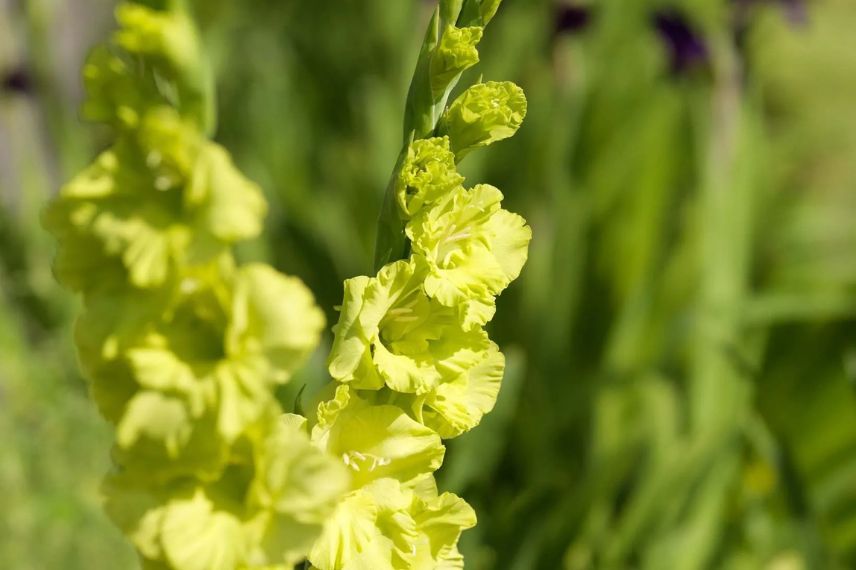
Fritillaria persica 'Green Dreams' – A Rare and Chic Bicolour Vertical Statement
More discreet than the crown imperial, but just as spectacular, the Fritillaria persica ‘Green Dreams’ unfurls in April its tall flower spikes of 80 cm, adorned with 15 to 20 trailing bell-shaped flowers, in an almond green hue tinged with plum-brown, as if dusted with a fine silvery bloom. The blue-grey-green foliage, matte and regular, is also highly ornamental, forming an elegant spiral along the stem.
Native to the mountains of Persia, this hardy bulb thrives in dry, well-drained soil in full sun. It dislikes winter moisture: a raised bed or limestone rockery is ideal to provide conditions close to its natural habitat. Like many bulbs from dry climates, it enters summer dormancy.
‘Green Dreams’ makes a striking presence in borders, alongside tulips and daffodils, silver-leaved euphorbias like ‘Glacier Blue’, or with sages and artemisias, which help disguise its summer absence. Its sweet fragrance attracts pollinators and, as an added bonus, its bulb repels rodents, protecting neighbouring bulbs. A precious and rare variety, perfect for adding height and a sophisticated touch to the most refined spring displays.
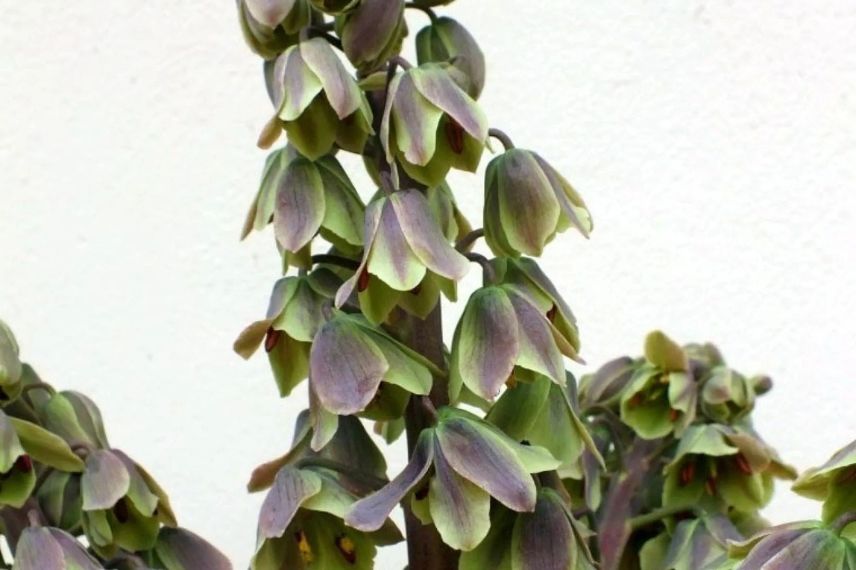
Tulipa 'Spring Green' – The Cream and Green Elegance of Late Spring
A true classic among classics, the Viridiflora Tulip ‘Spring Green’ captivates with its slender silhouette and lily-shaped flower, which opens wide into a star shape in late spring, between April and May. Its cream petals delicately veined with soft green bring freshness and elegance, both in the garden and in bouquets. It is borne on a sturdy 45 cm stem, upright and resilient to harsh weather.
This variety belongs to the viridiflora tulips, known for their long-lasting flowering (up to three weeks) and their ability to thrive in well-drained soil. It enjoys full sun or partial shade and blends effortlessly into all types of flower beds. For a romantic and delicate display, pair it with pansies or pink daisies, or even with lady’s mantle, whose airy foliage highlights its elegant design. Perfect for borders, mixed borders, or grouped in a perennial bed, it also thrives in containers.
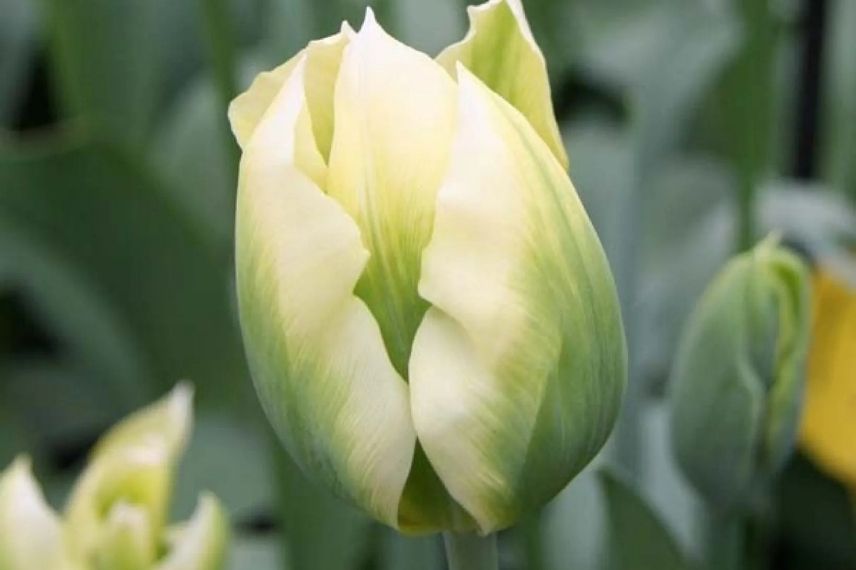
- Subscribe!
- Contents
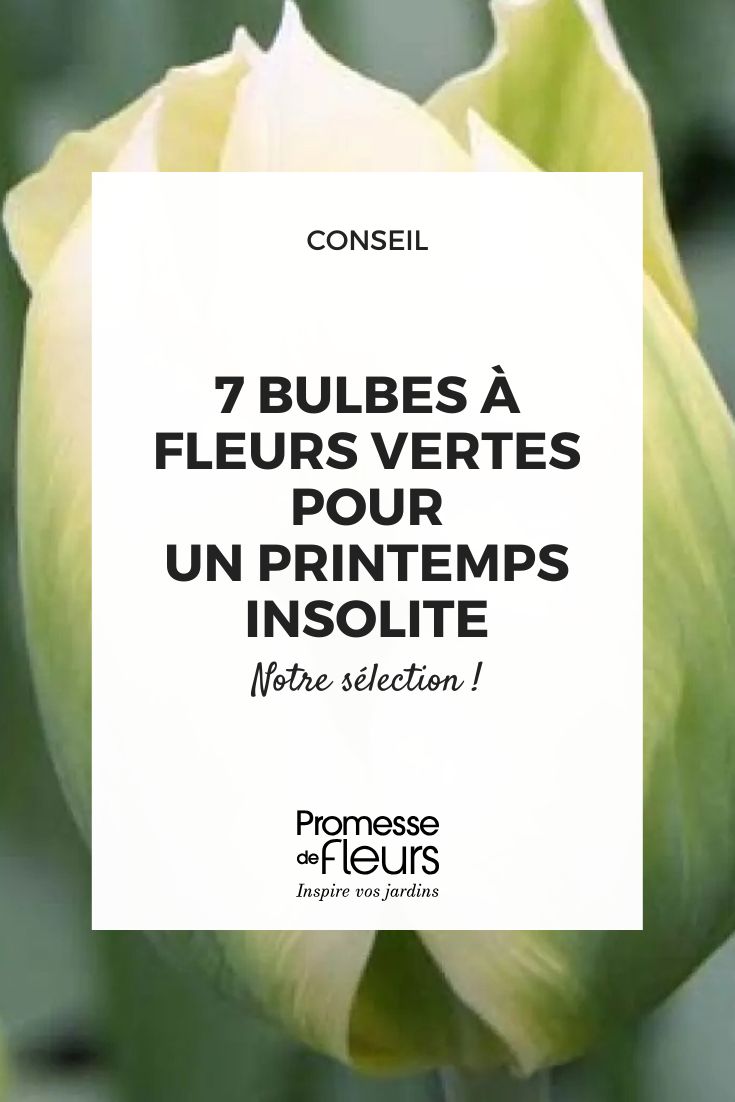































Comments